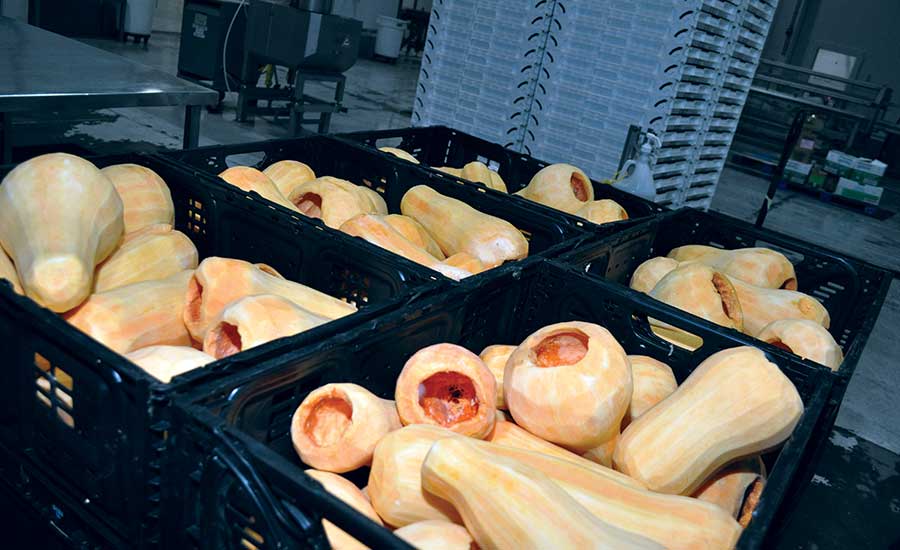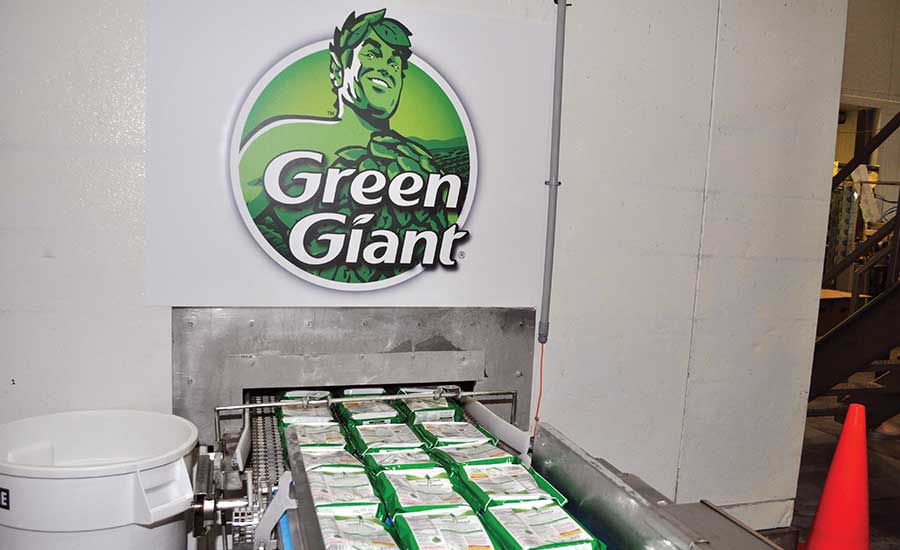B&G Foods has built a reputation for acquiring struggling brands, and nurturing them back to new levels of success. That’s why in 2015, when it acquired the Green Giant and Le Sueur frozen and shelf-stable vegetable businesses from Minneapolis-based General Mills, Inc., the Parsippany, N.J.-based company was in position to redefine the frozen vegetables category.
For example, from 1997-2018, B&G Foods completed 23 acquisitions and grew from $129 million in net sales to $1.7 billion. It employs over 2,500 employees nationwide, and produces 4,500 SKUs out of more than 100 manufacturing and co-manufacturing facilities, including a 200,000-square-foot Yuma, Ariz., plant. B&G Foods also claimed the No. 7 spot in Refrigerated & Frozen Foods’ 2019 Top 150 Frozen Foods Processors report. (CLICK HERE to learn more about B&G Foods).
Fast Facts
Company: B&G Foods
Plant Location: Yuma, Arizona
Total Square Feet: 200,000
No. of Processing Lines: 3
No. of Packaging Lines: 4
Certifications: SQF, Gluten-Free, Organic, PCQI
Here’s how B&G Foods’ ability to continuously innovate and develop new products enabled it to make a giant-size footprint in the frozen foods market, and receive Refrigerated & Frozen Foods’ 2019 Frozen Foods Processor of the Year.
From field to table
B&G Foods produces more than 50 million packages a year of Green Giant Riced Veggies and Green Giant Veggie Spirals, which placed fifth in Refrigerated & Frozen Foods’ 2018 Best New Retail Products contest, out of its Yuma co-packing plant owned by Growers Express, Salinas, Calif.
The 50,000- to 60,000-square-foot vegetable processing room holds up to 2 weeks’ worth of zucchini, cauliflower and butternut squash, however vegetables are processed within about 4 days.
“We harvest at the peak of freshness and process them right away, locking in the freshness,” says Rick Drummond, vice president, R&D, innovation and consumer affairs.
Raw material such as zucchini, butternut squash and other vegetables enter the facility in fielding bins, which are then dumped before undergoing an initial wash. From there, operators manually clean each product, looking for defects and bruising, before the vegetables convey up to the spiralizer or dicer, blancher and the freezing process.

Here, whole butternut squash enter a slicing machine to be spiralized.
At the time of Refrigerated & Frozen Foods’ visit, B&G Foods was producing Green Giant Riced Veggies, Green Giant Veggie Spirals and its Riced Cauliflower Stuffing seasonal product.
Green Giant Veggie Spirals. For Green Giant Veggie Spirals, vegetables come in whole, are cleaned, then placed on a conveyor belt to be cut into size. Then, they feed into a slicing machine to make spiralized veggies.
“The center, which is full of seeds, is actually pushed out and not used because producing a high-quality product is important to us. We use a specific type of zucchini that has as few seeds in the center as possible,” says Drummond.
Once the vegetables are cleaned and the skin of the butternut squash is removed, they enter the processing line. The vegetables are first fed into the spiralizers.
From there, the spiralized vegetables enter the blancher and transfer to the pre-cooler, which brings the temperatures down from 200°F to 100°F before quickly entering the freezer, where the product chills down to below freezing for about 4 minutes.
After the product freezes, it enters another room, where the spirals convey up into the packaging room to be deposited into 12- or 24-ounce bags, then sealed and code dated. The bags also undergo a metal detector and checkweigher for additional quality control.
Following packaging, Green Giant Veggie Spirals convey into a blast freezer.
Green Giant Riced Veggies. The cauliflower processing area for Green Giant Riced Veggies is where raw heads of cauliflower enter the facility, and operators pull out green leaves, look for bruising, etc.
All vegetables then convey up into the blancher to be heated from room temperature to 200°F.

Once Green Giant Veggie Spirals are sealed, code dated and checkweighed, the packages convey into a blast freezer.
“We’re deactivating enzymes in the blancher. Raw vegetables lose flavor, color and texture because there are enzymes in the vegetables. So, we deactivate those in the blancher, so that it doesn’t spoil. Then it can be frozen and last for a period of 18 months,” adds Drummond.
Cauliflower heads exit the cleaning stage and convey up to the dicer, where they are cut into rice-sized pieces. Then they enter the blancher, where they rotate in the cooker for 2-3 minutes at about 200°F, before being cooled.
From there, the pre-cooler brings the temperatures down from 200°F to less than 100°F in the wash before entering the freezer, where the product chills down at below freezing for about 4 minutes.
After the product freezes, it enters another room, where the riced cauliflower conveys up into the packaging room to be deposited into 10-, 12- or 40-ounce bags, then sealed and code dated. The bags also undergo a metal detector and checkweigher for additional quality control.
After packaging, Green Giant Riced Veggies convey into a blast freezer for up to 4 minutes.
Riced Cauliflower Stuffing. At the time of Refrigerated & Frozen Foods’ visit, B&G Foods was also producing Riced Cauliflower Stuffing, which consists of carrots, celery, onion, cranberry, garlic and herbs.
“The magic of this cauliflower-based blend is that it tastes just like stuffing, but it’s yet another way to add more veggies to your plate, even during the holidays,” says Kristin Bradley, public relations manager. “Green Giant Riced Cauliflower Stuffing offers 45% fewer calories than stuffing. And, it’s gluten-free.”
The different vegetables are blended frozen with the dried cranberries in a different room to create a uniform mixture that is held in bulk frozen storage.
After the product freezes, the stuffing conveys up into the packaging room to be deposited into 12-ounce bags, then sealed and code dated. The bags also undergo a metal detector and checkweigher for additional quality control.
All three baggers feed from one single individually-quick frozen (IQF) line. And, the whole facility produces 40 million pounds a year, or about 25 million pounds of Riced Veggies and about 15 million pounds of Veggie Spirals per year.


















